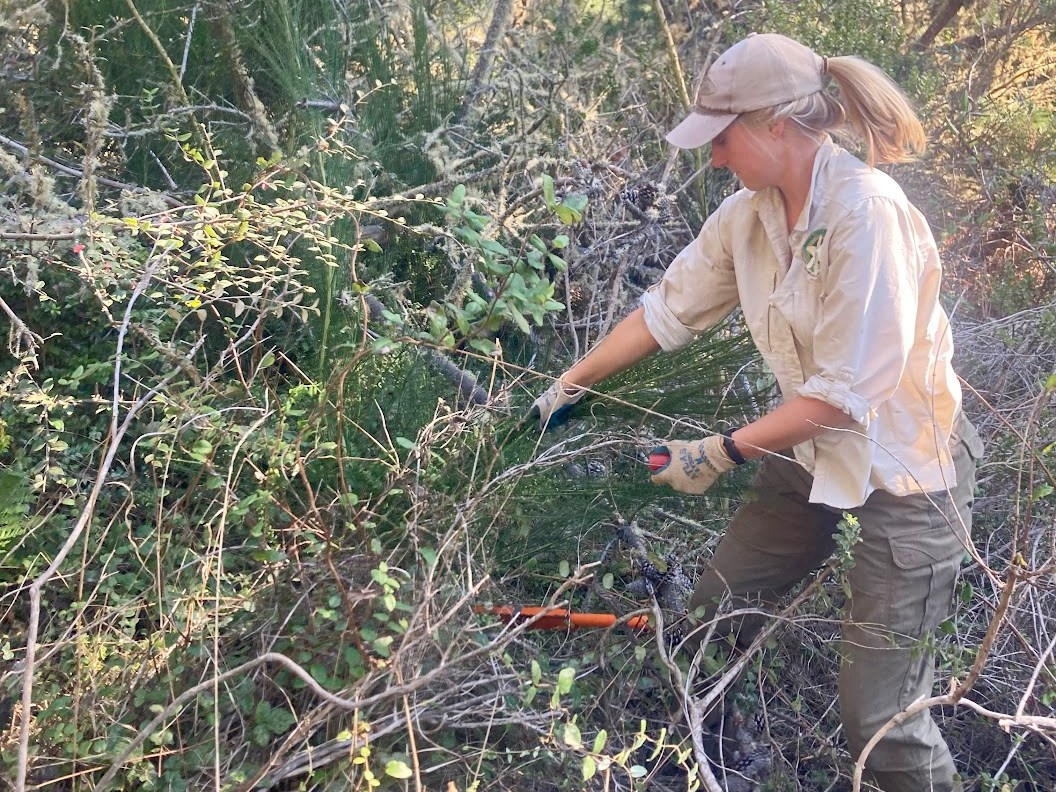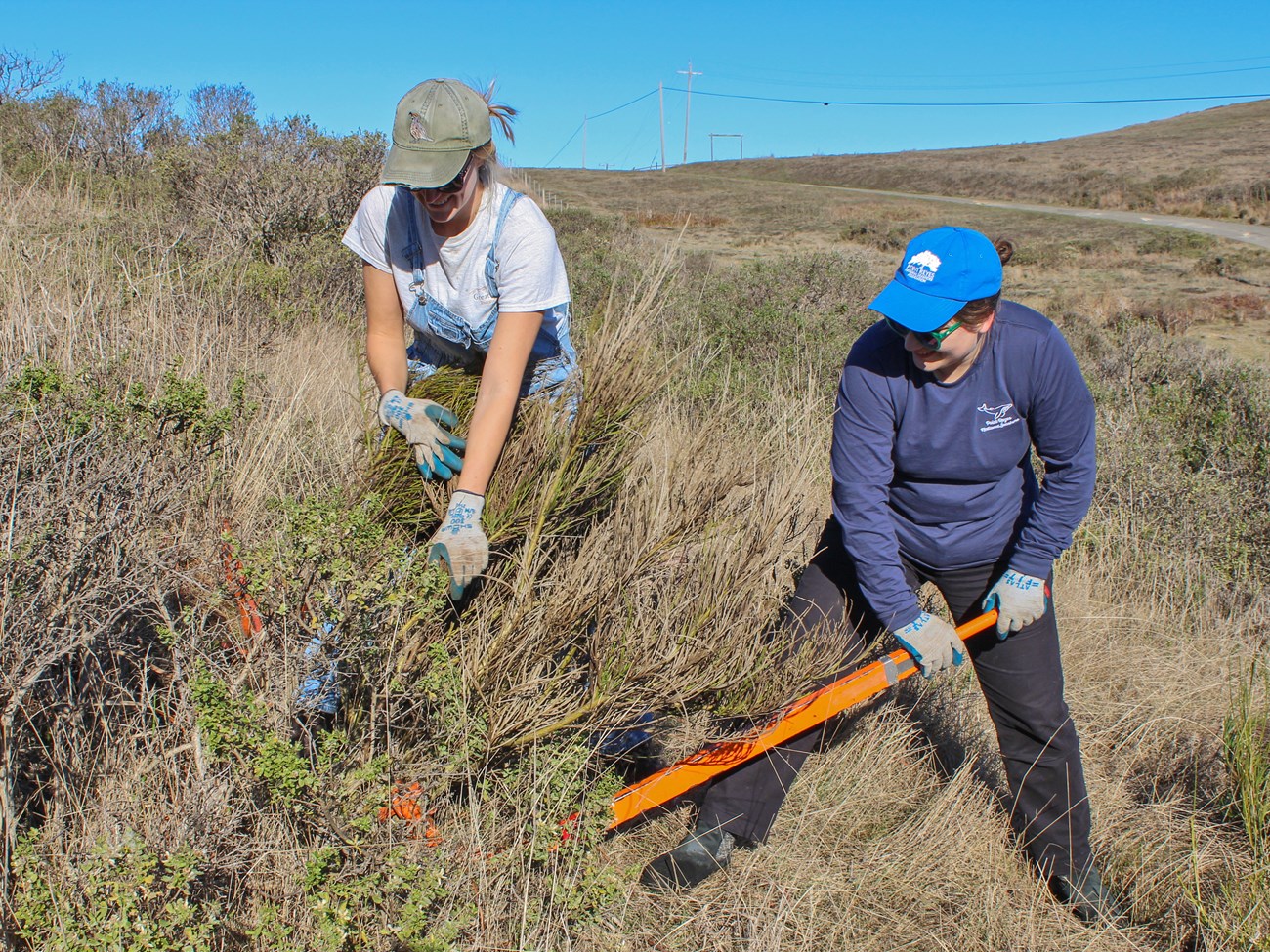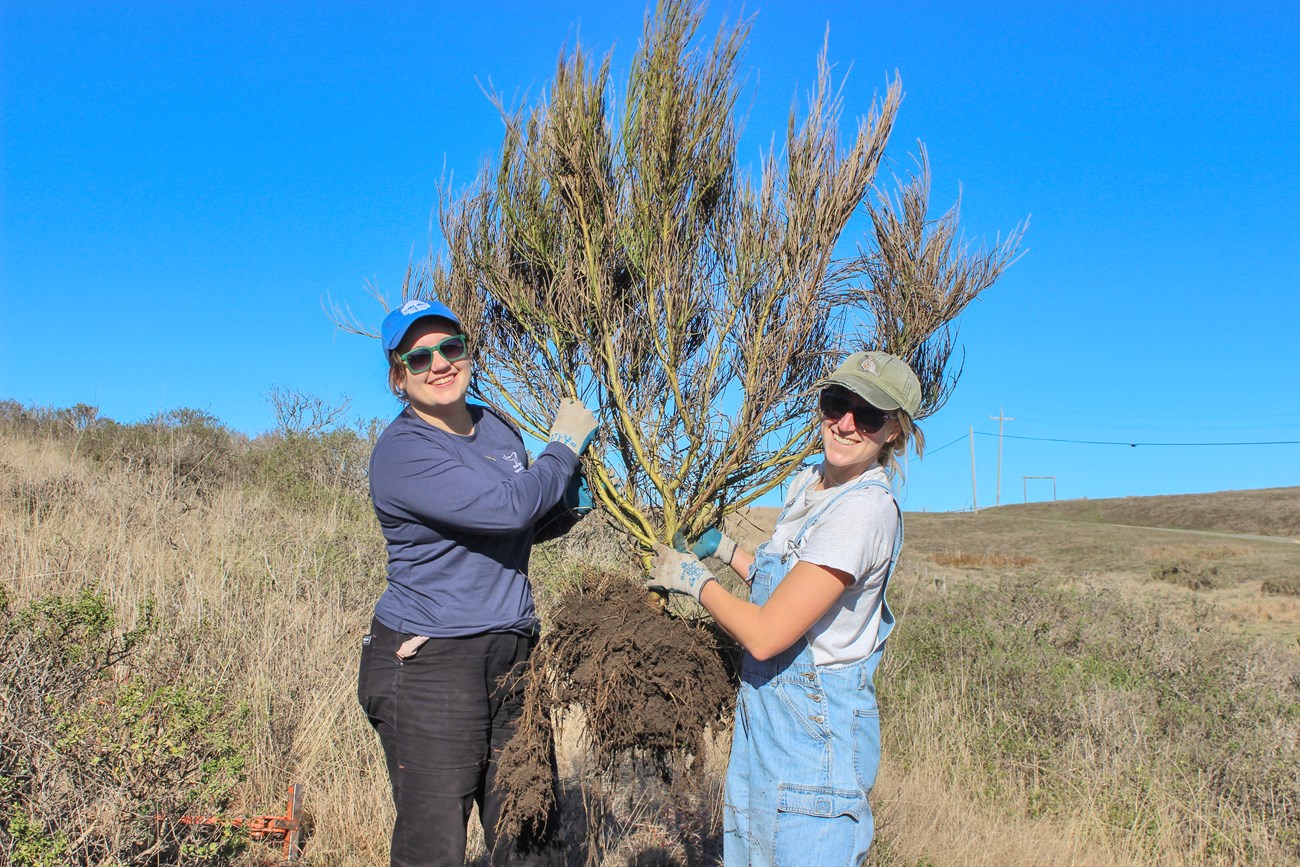Last updated: June 13, 2023
Article
In the Weeds on Invasive Plants
By Science Communication Intern Claire Baker, Point Reyes National Seashore Association

Point Reyes National Seashore Association / Claire Baker
December 2022 - Working with invasive plants is a lot like weeding a garden—if the garden is acres and acres of land, and some of the weeds are seven feet tall. In November, I went into the field with Biological Science Technician Colleen Herr to help tackle a small part of the garden that is Point Reyes National Seashore. We were looking for Scotch broom (Cytisus scoparius), an invasive shrub with small leaves and beautiful yellow flowers, and we had been given a heads-up by previous surveyors that there was some nearby.

Point Reyes National Seashore Association / Claire Baker
And so, Colleen and I set out to our patch armed with sturdy shoes, gloves, and weed wrenches—a kind of lever that can grasp plants at their roots to help us pull them out of the ground, for those that are too large for pure yanking—and we got to work.
There are many invasive species in and around Point Reyes. The exact definition of “invasive” can be a little hard to pin down, but the work that Colleen and others do is focused on a set list of plants that can take over an area and create a monoculture—an environment where just one type of plant grows. Monocultures drastically reduce the biodiversity of an area, threatening its resilience and limiting habitat for other plant and animal species.
Scotch broom is also particularly harmful because it changes the chemistry of the soil it grows in. Along with other brooms and bush lupine, it’s a nitrogen-fixing plant, meaning that the soil around it has higher nitrogen levels than usual. Native plants in Point Reyes forests are used to growing in soil with less nitrogen, so Scotch broom is not only monopolizing the land but also creating unfriendly soil, making growing easier for nitrogen-loving invasive plants and harder for native ones. Scotch broom might be pretty, especially with its spring flowers, but it is a threat to multiple Point Reyes habitats and the work of removing it is crucial for the health of the ecosystem.
The Scotch broom had grown thick in our patch. In some spots, tiny plants dotted around, easy to pull with just our hands. In others, massive clusters of Scotch broom grew together, some of them several meters tall with thick, woody stems a few inches across.
We started by clearing the smaller plants, creating large piles of leafy stems and roots. Then, we tackled the larger, more stubborn weeds. Medium-sized Scotch broom plants came up with the wrenches and a little effort, and so slowly we weeded until all that was left were massive stems.

Point Reyes National Seashore Association / Zoe Duerksen-Salm
Scotch broom plants have grown so large in this area because it hasn’t been treated for invasive plants in several years. Someone had pulled Scotch broom here before, Colleen said, as she held up a long-dead stem that had been left on the forest floor for evidence. In the interim years, though, it had come back with a vengeance. It’s important for invasive plant treatment to be repeated and cyclical in order to fully clear an area. It’s not enough to get plants out of a patch once—existing seeds are already in the ground, and they will grow again.
One reason our patch had been left to regrow was that invasive plant crews have to pick their battles, and they had been busy working on other spots. It takes a large investment to truly clear an area of invasives, and the plants often work faster than the people can. And, Colleen said, there are some invasive plants and areas that crews just leave alone. They are too widespread and too difficult to remove for it to be worth beginning a project, especially since the plant might just come back in a few years if there isn’t enough time for people to return to the site repeatedly.
We kept working at the massive Scotch broom plants. I stared down a plant taller than I was, with a thick stem two or three inches wide. I used the weed wrench to grasp its stem and pulled, hard—nothing. I put my whole body weight into pulling, and still the plant didn’t budge. Colleen showed me how to dig around the base of the plant to loosen the roots’ hold on the soil, and then rotate the main stem to detach it further. We worked together to extract more and more of the root system, until finally, with an emphatic pull of the weed wrench, the plant came out of the ground.

Point Reyes National Seashore Association / Zoe Duerksen-Salm
Invasive plant control is crucial for the continued health of the environment, and it happens through direct effort from people like Colleen and her team. As we walked back to the road from the broom patch, it was satisfying to see the big piles of plants that we had pulled, knowing that they would no longer take up crucial habitat area for native plants.
“We’re saving the world,” Colleen said to me as we approached the road.
I added, “one plant at a time.”
For more information
- Exotic Invasive Plants webpage, Point Reyes National Seashore
- Invasive Plants webpage, Pacific Coast Science and Learning Center
See more from the Bay Area Nature & Science Blog
